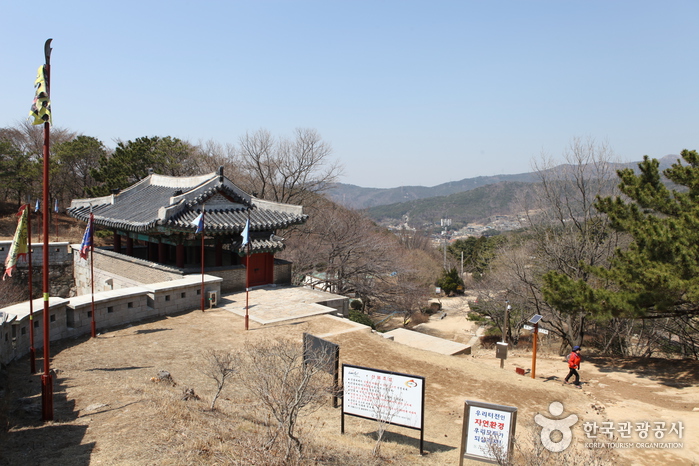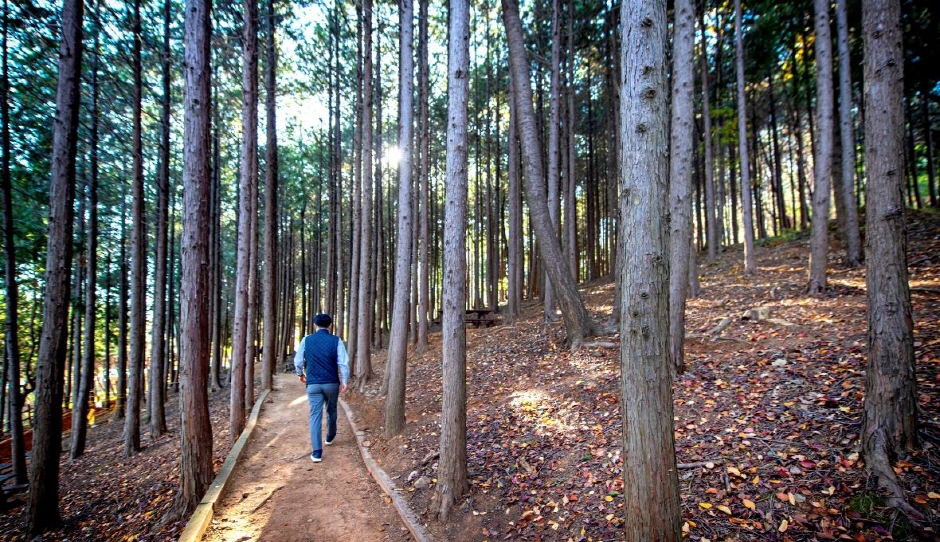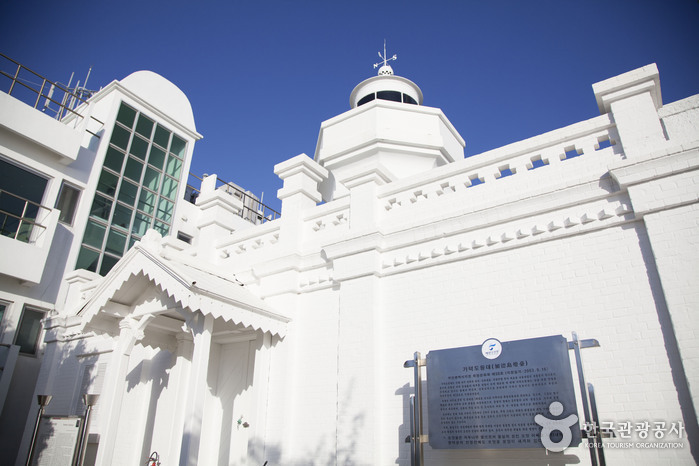Olive Young - Jinhae Yongwon Branch [Tax Refund Shop] (올리브영 진해용원점)
19.2Km 2024-06-27
18, Yongwon-ro 7beon-gil, Jinhae-gu, Changwon-si, Gyeongsangnam-do
-
Mega Mart - Gimhae Branch [Tax Refund Shop] (메가마트 김해점)
19.3Km 2024-04-22
20, Gimhae-daero 2492beon-gil, Gimhae-si, Gyeongsangnam-do
-
Geumjeongsanseong Fortress (금정산성)
19.5Km 2024-03-05
78-5 Bungmun-ro, Geumjeong-gu, Busan
+82-51-519-4092
Geumjeongsanseong Fortress, with a circumference of 18,845 meters along the ridges and valleys of Geumjeongsan Mountain, is a large-scale fortress built during the Joseon dynasty between 1701 and 1703. The fortress is accompanied by Geumjeongsanseong Village and is known for producing Sanseong makgeolli (unrefined rice wine), a traditional Korean alcoholic beverage. Additionally, there are numerous restaurants, cafés, and attractions, making it a place where nature, history, cuisine, and sightseeing coexist.
Ttangmoesan Mountain (땅뫼산)
19.7Km 2024-02-26
260-1 Oryundae-ro, Geumjeong-gu, Busan
The Ttangmoesan Mountain Forest Trail, wrapping around the Hoedong Reservoir, is distinguished by its red clay path. This trail spans 1.7 kilometers and can be comfortably completed in approximately thirty minutes at a relaxed pace. As you stroll through the lush cypress forest, the cool sensation of the red clay is enjoyable under bare feet. The journey along forest paths and wooden deck walkways also reveals a variety of trees native to the lake marsh environment.
Gadeokdo Lighthouse (가덕도 등대)
19.8Km 2020-06-01
1237, Gadeokhaean-ro, Gangseo-gu, Busan
+82-51-971-9710
Gadeokdo Lighthouse is a manned lighthouse patterned after the gothic style of lighthouses in France. Built in December, 1909 at the end of the Daehan Empire (1897-1910), it is an intricate building that houses a light tower (9.2 meters high), an office, and a lighthouse keeper’s room. Plum blossoms, the symbol of the imperial family of Joseon, are delicately carved along this European-style building. It is considered a remarkable cultural property not only because of its architectural design, unique shape or historic value, but also because it has been surprisingly well-maintained, especially in comparison to other lighthouses built during the same period. In recognition of its unmatched style and preservation, the old Gadeokdo lighthouse was designated Tangible Cultural Property No. 50 of Busan in Sep. 2003. It is owned and managed by the Ministry of Maritime Affairs and Fisheries. A new lighthouse was built next to the original one in 2002. The new lighthouse structure is octagonal in shape and 40.5 meters high, the second highest lighthouse in Korea.
Gadeokdo Island, the location of Gadeokdo lighthouse, is often referred to as the ‘Island of History,’ and is the largest island in Busan. Gadeokdo, a strategically important base for military operations and seaborne trade, was the stage for a number of gruesome battles during the Imjin War (1592-1598). Today, it is a critical entry point to the Jinhae Bay.
Gadeokdo Lighthouse is located within a national naval base. Therefore, visitors must contact and register with the Busan Regional Maritime Affairs and Port Office prior to visiting the lighthouse. Those who participate in the Lighthouse Experience Program (parties of 6 or less) can spend the night in the innkeeper’s room free of charge. In order to use these accommodations, visitors must apply online at the Busan Regional Maritime Affairs and Port’s homepage between the 1st and the 8th of the month, one month prior to the desired date of visit.
Gijang Jonggajip Gomjangeo (기장종가집곰장어)
19.9Km 2024-10-30
72 Gijanghaean-ro Gijang-eup, Gijang-gun, Busan
A good meal to restore energy
Inshore Hagfish may be unfamiliar to foreigners as a food ingredient, but it is considered a health food that is good for the body. Depending on your taste, you can enjoy salted Inshore Hagfish, seasoned Inshore Hagfish, or brown straw Inshore Hagfish. Thanks to various delicious side dishes such as Kimchi pancake and the owner's own cooking, you can eat comfortably, so even beginners will fall in love with Inshore Hagfish. After eating seasoned Inshore Hagfish, be sure to add fried rice to finish the meal.
Haebyeonjipbul Gomjangeo (해변짚불곰장어)
19.9Km 2019-11-19
11, Gongsu 2-gil, Gijang-gun, Busan
+82-51-721-4539
Haebyeonjipbul Gomjangeo is located close to Gijang Gongsu Village and offers a menu of varied sea eel dishes and blowfish stew.
Wonjojipbul Gomjangeo Gijang Oegajip (원조짚불곰장어 기장외가집)
19.9Km 2024-03-15
5-1 Gongsu 2-gil, Gijang-eup, Gijang-gun, Busan
+82-51-721-7098
Located in Sirang-ri, Gijang-gun, Wonjojipbul Gomjangeo Gijang Oegajip specializes in jipbul gomjangeo (straw-roasted hagfish). The use of straw imparts a distinct nutty flavor to the eel, making it a favorite among diners. Gijang Oegajib served as the pioneer, leading to the establishment of a cluster of sea eel restaurants in the Gongsu Village. The restaurant offers various dishes such as yangnyeom gomjangeo (grilled marinated hagfish), sogeum gui (grilled salted sea eel), gomjangeo maeuntang (spicy sea eel stew).
Subaekdang Dwaejigukbap Gimhae Branch (수백당돼지국밥김해점)
19.9Km 2024-01-24
109 Inje-ro, Gimhae-si, Gyeongsangnam-do
Subaekdang Dwaejigukbap specializes in dwaeji gukbap (pork and rice soup) with boiled pork slices and rice in a broth simmered with pork bones. Its owner is said to have visited 96 pork soup restaurants across the country to study the taste and make the best pork and rice soup. The rich, refreshing broth made by boiling pork backbone for a long time is excellent. This restaurant also serves sundae gukbap (sundae and rice soup) made with premium Berkshire pork. The Maneul Suyuk Baekban (garlic and boiled pork slices set menu), one of its signature items, is made with pork belly that anyone loves and topped with garlic sauce.

![Mega Mart - Gimhae Branch [Tax Refund Shop] (메가마트 김해점)](http://tong.visitkorea.or.kr/cms/resource/29/2885929_image2_1.jpg)





 English
English
 한국어
한국어 日本語
日本語 中文(简体)
中文(简体) Deutsch
Deutsch Français
Français Español
Español Русский
Русский